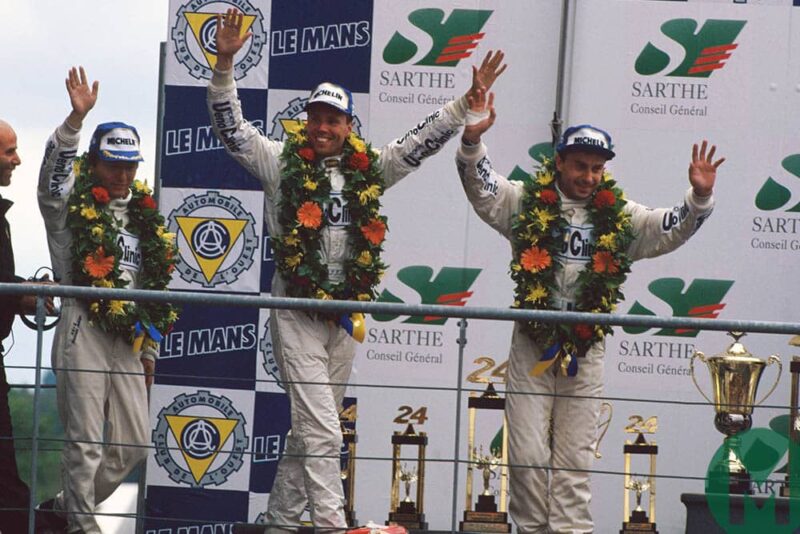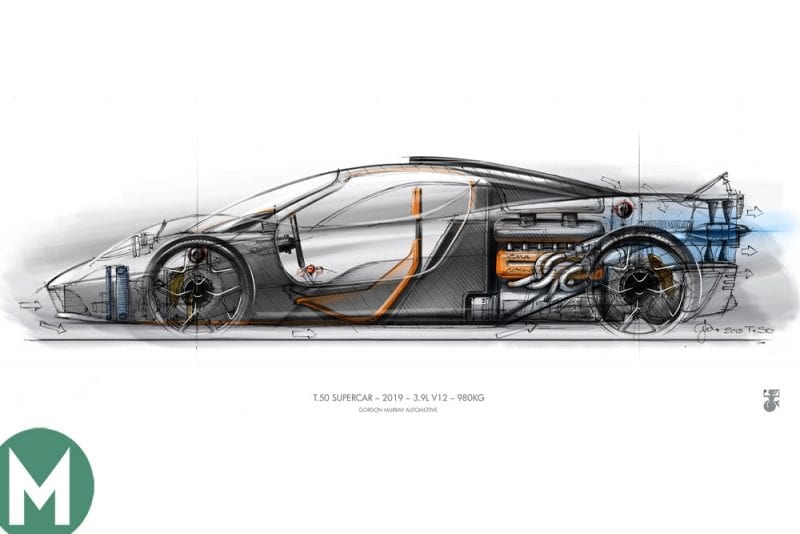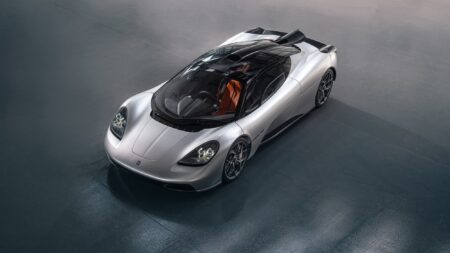But wet weather, technical issues and inspired driving from the McLaren drivers closed the performance gap and meant that the top three places were filled by F1s by midnight.
Victory was far from assured, as the McLarens’ clutches started to drag in the final hours of the race, enabling the Courage car, driven by Mario Andretti, Eric Helary and Bob Wollek, to close in by ten seconds a lap.
Andretti made it through to second in his final stint, but Yannick Dalmas held on to take victory alongside his team-mates, JJ Lehto and Masanori Sekiya.

Sekiya, Lehto and Dalmas on the podium
Motorsport Images
Murray told the Motor Sport audience that he was initially “horrified” when McLaren F1 customers asked about racing the car. “I didn’t think it would be quick,” he said.
“But it was light, with a low centre of gravity and with ground-effect aerodynamics”.
The first T.50 images emerged in June, with Murray saying that his aim was to build the “purest, lightest, most driver-focused supercar ever”.
It’s powered by a bespoke Cosworth V12 engine that revs to 12,100rpm and comes with a £2m price tag — before taxes.



